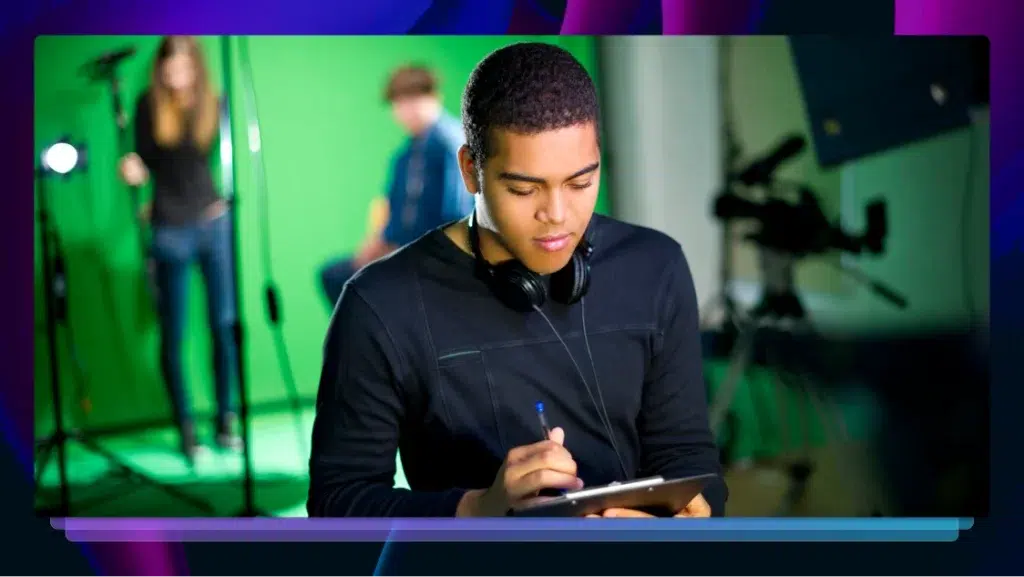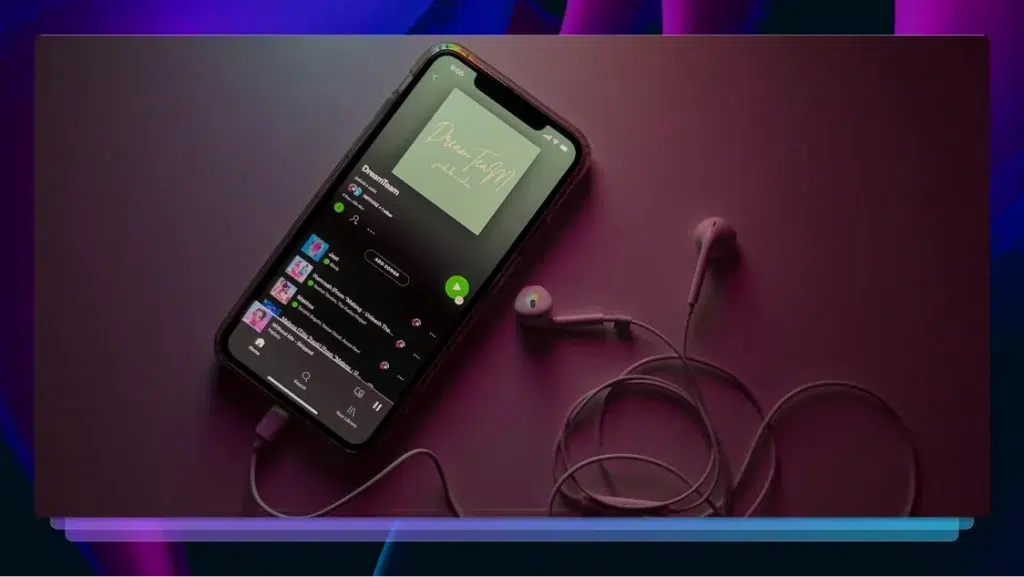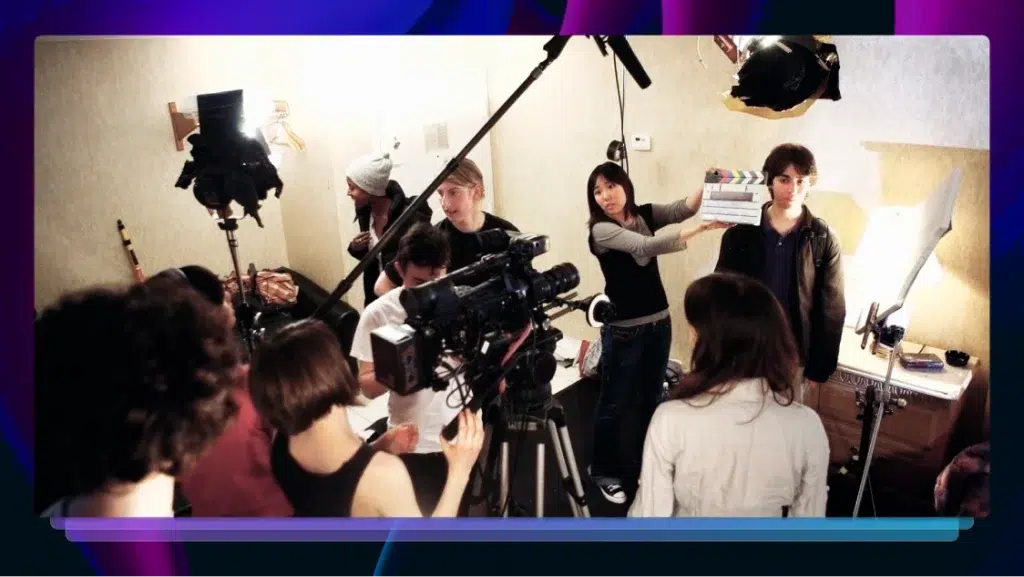Personal Branding Tips for the Modern Journalist: Building a Credible Reputation
Learn how to build a credible and long-lasting reputation as a journalist with these expert tips from the team at Rev.

The final piece to building a successful career as a modern journalist is to manage yourself as a company would. Because your online presence is an integral part of your success, you need to set careful boundaries for the kind of behavior you exhibit in public and online.
For journalists – grab your content distribution strategy
Personal Branding Management for the Modern Journalist

You don’t want your online profiles to appear corporate or to lose your unique perspective. However, you also don’t want to risk losing the trust you’ve earned with audiences by allowing yourself to post inappropriate things. Maybe inappropriate is your personal brand, in which case, commit to the controversy! For the remaining majority, stick to thoughtful and well-crafted posts.
A good rule of thumb to follow is if you would be uncomfortable trying to explain your posts to your grandmother or your children, it’s best to delete it entirely.
Be aware of the ways in which social media interactions can affect your daily life. With success will come trolls and people looking to start an argument. Fighting with strangers online is not worth your sanity or mental well-being. Set some parameters for yourself when it comes to social media use and stick to them.
Set some parameters for yourself when it comes to social media use and stick to them.
Start by only allowing yourself to engage with commenters for one hour a day. A time commitment will allow you to prioritize the most important users and prevent you from wasting too much of your day mindlessly scrolling the internet.
More popular modern journalists might find that one hour isn’t enough to interact with all the people you need to. In that case, increase your allotted time slowly. Try to find the sweet spot where you have time to connect with a majority of your audience without wasting an entire afternoon.
Boundaries will also save you from saturating people’s timelines. The worst thing you can do is take people’s attention for granted by giving them something new to read and react to every few minutes. Your content will make a bigger impact if your posts are infrequent enough for fans to miss you. Don’t give people a reason to unfollow you by annoying them with every thought or idea you have. Save some of that for your offline notebook.
Building Credibility
Unfortunately, you can’t build a community based solely on excitement for your work. There will be plenty of that, but you will also run into negative comments. These will hurt much more when they point out ways that you were wrong or presented inaccurate reporting. In these moments, you have a choice to make.
You can either be the journalist who deletes criticism and present an image of perfection. Or, you can take accountability for your human errors and build trust and credibility with your audience. We suggest always choosing option 2.
Some of the comments you’ll receive will be readers who are seeking more clarity. They won’t push you to apologize for mistakes or look to debate you. They are probably just asking for more information from one of your sources. These kinds of interactions give you the opportunity to prove your dedication to transparency.
You can respond to their comment with words, or you might consider creating a multimedia asset specifically addressing their question. If one reader is brave enough to ask you a question, chances are high that more readers were confused about the same thing. Nothing builds trust and appreciation than going the extra mile to provide clarity.
Nothing builds trust and appreciation than going the extra mile to provide clarity.
On the other hand, some comments from people will amount to nothing more than an attack on your work. It may or may not be based on facts, but you should do your best to respond to everything. Voices of negativity tend to carry much further than voices who are praising your work. If you don’t get ahead of the critiques, they could easily snowball into a much bigger problem. Instead of one of your stories being called into question, people might start to wonder about all of your reports.
Keep a healthy dialog open with those who are excited about your work and those who don’t. By publicly acknowledging both, you subliminally prove that you value fairness and both sides of the story — an essential quality for journalists.
Other online behaviors that might diminish your credibility as a journalist include:
- Attacking other journalists for their stories
- Posting and retweeting stories from gossip sites or other non-credible sources
- Plagiarising another person’s work
- Ignoring questions about your sources and research
- Refusing to acknowledge or fix errors
Do your best to avoid these at all costs. If you stick to the ethics of journalism we laid out earlier, you and your credibility should be safe.
Knowing When to Follow Protocol and When to Break the Rules: The Grey Area
Now that we’ve outlined social media protocols that savvy modern journalists follow, we think it’s time for our own moment of transparency. You don’t have to follow any of these rules if they don’t make sense for you.
Your online profiles should be taken seriously, but that shouldn’t stop you from enjoying them as an average user as well. Each rule should be considered in the context of your personal career.
For example, a data journalist needs to present themselves in a much different way than a journalist who studies sex and relationships. Audiences who follow you for statistics, reports, and numbers will be confused if you start recounting personal stories from your marriage. Audiences who follow a relationship journalist might expect it.
Use your best judgment to decide what works best for each of your platforms. Remember that you always have the option of creating second, private profiles where you can post freely, without fear of professional consequences.
Journalists who own their own publishing site generally have more space to speak freely on their social platforms. They are not beholden to larger companies with rules and regulations. If you don’t rely on someone else to pay you for your work and you can generate your income independently, it’s much easier to get away with posts that are outside the box.
A staff writer or someone who wants to be published in a highly-regarded journal should play it safe on their social profiles.

In the New Media era, you are not afforded a true first impression. People are looking you up online before they ever meet you in person. Be careful not to disqualify yourself by posting with reckless abandon. At the same time, remember that your individual perspective is what people will remember, and what will get you hired. So, don’t censor yourself so much that your profiles become generic and boring.
To learn which rules you can bend or break (and which ones to follow) give yourself one day a month to talk about topics that aren’t typical for you. Start out with moderate opinions and slowly work your way to a more honest, nuanced opinion.
Take inventory of the reaction you’re getting from your followers. They’ll let you know exactly what they love and what posts go too far. And then, check in with yourself. Ultimately, this is your career and your online presence. If you’re not proud of what you’re publishing, none of this is worth doing anyway.
If you’re not proud of what you’re publishing, none of this is worth doing anyway.
Point of View Is More Important Now than Ever
Spend enough time on social media, or the internet in general, and you’re going to find the topic you won’t be able to keep quiet about. A politician will say something, or an event will happen in the world and you will be forced to give your opinion. As a person living in this time, that is your right. As a journalist, it might even be what makes you thrive.
Point of view is crucial to connecting with your audience. Think about fast food chains, for example. Wendy’s is famous for having an excellent Twitter that people love. On the other hand, no one really talks about McDonald’s online presence. Both are giants in their industry, but only one is celebrated online for their bold choices.
The same rules apply to your personal brand. Bravely providing your opinion on matters will give your audience something to rally behind. An unfamiliar reader might find your story and click through to your social profiles only to learn that you grew up in a very religious home. A small fact about you could shift their entire perspective on the context of your story.
Understanding your point of view and what is important to you might illuminate why you crafted your story the way you did. In some cases, it might even clarify some of the choices you made that they didn’t agree with until they understood you better.
Don’t expect all reactions to be positive ones. You might share a post that you think is harmless that someone else has a problem with.
As long as you follow a checklist of standards that you have for yourself, everything will be fine. Think back to the elements of ethical journalism — do no harm, be fair, be accurate, be responsible. If you can read your social post and confirm that you are following all those rules, then post away. There’s no reason you should shy away from adding your perspective to important online conversations, even if it means losing a follower or two.
Network and Build Relationships with Social Media

On the topic of creating a community around your work, modern journalists should use social media as a tool to create a bigger network and stronger relationships with people in the industry. Don’t limit your potential by using your social profiles as a one-way conversation. Act as an audience member on each platform for other journalists in the industry.
Create a list of journalists you admire or publications you want to submit work to and make a habit of engaging with their posts in a thoughtful way. Inundating them with likes and generic comments won’t get you the kind of attention you’re after. You need to prove that you read their articles and were moved, in some way, by what they created.
Ask questions to the authors, comment on a particularly powerful section or create parallels between their topics and stories that you’ve also investigated. The more frequently you champion other people’s work, the better. You have to be a participant in the space as often as you are a publisher if you want to build strong relationships.
Editors often use social media as a place to request pitches from writers and journalists. Follow the editors you admire and keep an eye on their updates. You might find they are in search of a new story that aligns with your current work. Even if they don’t ask for something similar to what you’re working on, you’ll get a sense of the topics they prefer. You can use that information to inform the next story you investigate.
All these efforts will help grow your influence and earning potential.
All these efforts will help grow your influence and earning potential. You will have people in your network who will advocate for you, hire you, volunteer their time and skills to your story or simply tell you they enjoyed what you created. These are the people you want in your virtual corner if you’re interested in a sustained career in journalism.
Master Your Multimedia Knowledge
Before you build a robust network of creative professionals who are willing to help create different multimedia elements for your stories, you’re going to be responsible for all of it. If the first rule of journalism is to follow the ethics of journalism, the second rule is to always add multimedia elements to your story. Internet users demand it. Fifty-four percent of consumers say they want more video content from the people they support online. Their enthusiasm shows too. Companies report that the average user spends 88 percent longer on their site when that page contains video content.
The demand and engagement are there, it is your job as a modern journalist to do what you can to take advantage of it.
We mentioned iMovie earlier, but that isn’t your only option for video editing and production. Final Cut and Premiere are programs that can handle all video editing functions, from color correction to storyline. In fact, serious journalists should look into purchasing the entire Adobe Creative suite to guarantee quality and efficiency.
Websites like CreativeLive, Udemy or SkillShare offer courses you can take to learn each program. Users on YouTube often upload their own tutorials for people searching for quick fixes and troubleshooting options.
Don’t stop at video production, though. Spend time learning video editing and graphic design. It’s your job to tell a complete story, which means including the visual side of the story. Using your phone and a steady cam rig or a tripod, you can get high-quality photography to edit directly on your phone or using your computer. It’s a smart idea to learn the fundamentals of photography before you go out into the field.
Try to get a firm grasp on composition and exposure. Your smartphone will do a significant portion of the work for you, but if you ever needed to use a digital camera for your story, you’ll want to know how to get the best images out of it.
The same principles for finding the best workflow for creating your stories also work for finding your unique photography style. Study the people whose images you respond to most passionately. Listen to them speak about their process. Study the way their images transformed from raw files to final work. You’ll start to learn different tricks to get the images you want for your own stories. Lastly, continue to practice. Push yourself to take the multimedia aspects of your story as seriously as you do the written portion. When you combine it all together, you’ll come out with a stronger finished product.
To keep reading, head to Ch. 5: How to Build your Journalism Portfolio: Using Hootsuite, Squarespace, and More















